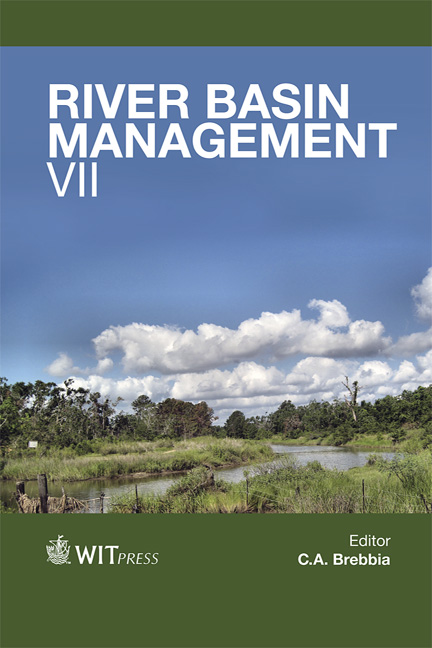Influence Of Submerged Groynes For Urban Creek Rehabilitation On Aquatic Environment At Sawmill Creek In Ottawa, Canada
Price
Free (open access)
Transaction
Volume
172
Pages
12
Page Range
265 - 276
Published
2013
Size
1,044 kb
Paper DOI
10.2495/RBM130221
Copyright
WIT Press
Author(s)
M. A. Ruta, E. C. Jamieson, C. D. Rennie, R. D. Townsend & B. Bezaire
Abstract
Submerged groynes (low-profile linear rock structures, also called stream barbs) were installed in a reach of Sawmill Creek in Ottawa, Canada in order to mitigate outer bank erosion in two consecutive bends. These structures have had an effect on both the aquatic life and habitat in the area. Changes in both the flow field and bathymetry have been recorded over 4 years (including 2 years prior to implementation of the groynes) using acoustic Doppler velocimeters, an acoustic Doppler current profiler, and a total station, respectively. The City of Ottawa’s Water Environment Protection Program (WEPP) has also provided fish abundance and habitat data for the study site as well as a control site located approximately 200 m downstream. The velocity and bathymetry data collected, combined with the fish abundance data, were used to demonstrate a causal relationship between the implementation of submerged groynes and the recorded change in fish abundance and habitat. There has been a consistent increase in fish abundance at the study site compared to that of the control site, indicating that the presence of the groynes is beneficial to the aquatic environment. This could be attributed to select features provided by the groynes which were not inherently available at the study site, namely: (1) velocity refuge and (2) visual isolation from predators. Keywords: barb, submerged groyne, urban creek, rehabilitation, fish abundance.
Keywords
Keywords: barb, submerged groyne, urban creek, rehabilitation, fish abundance.





